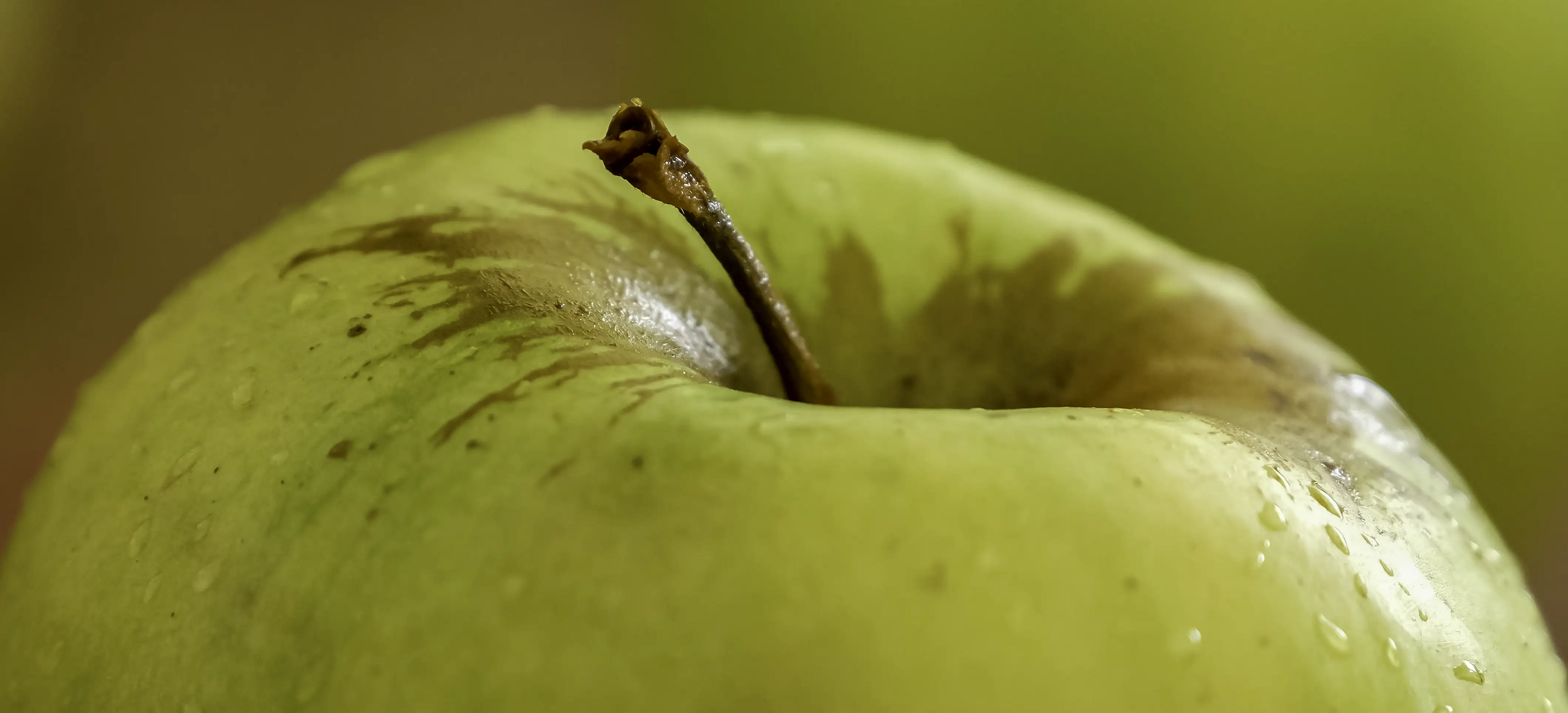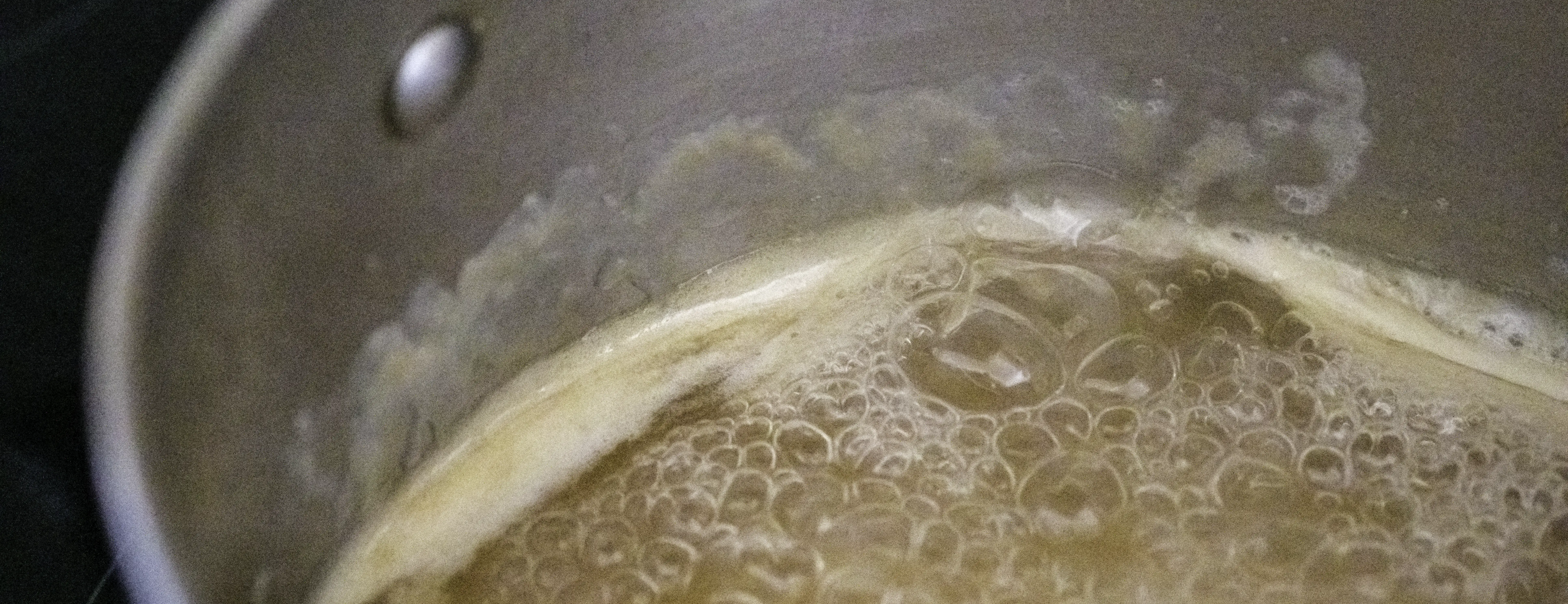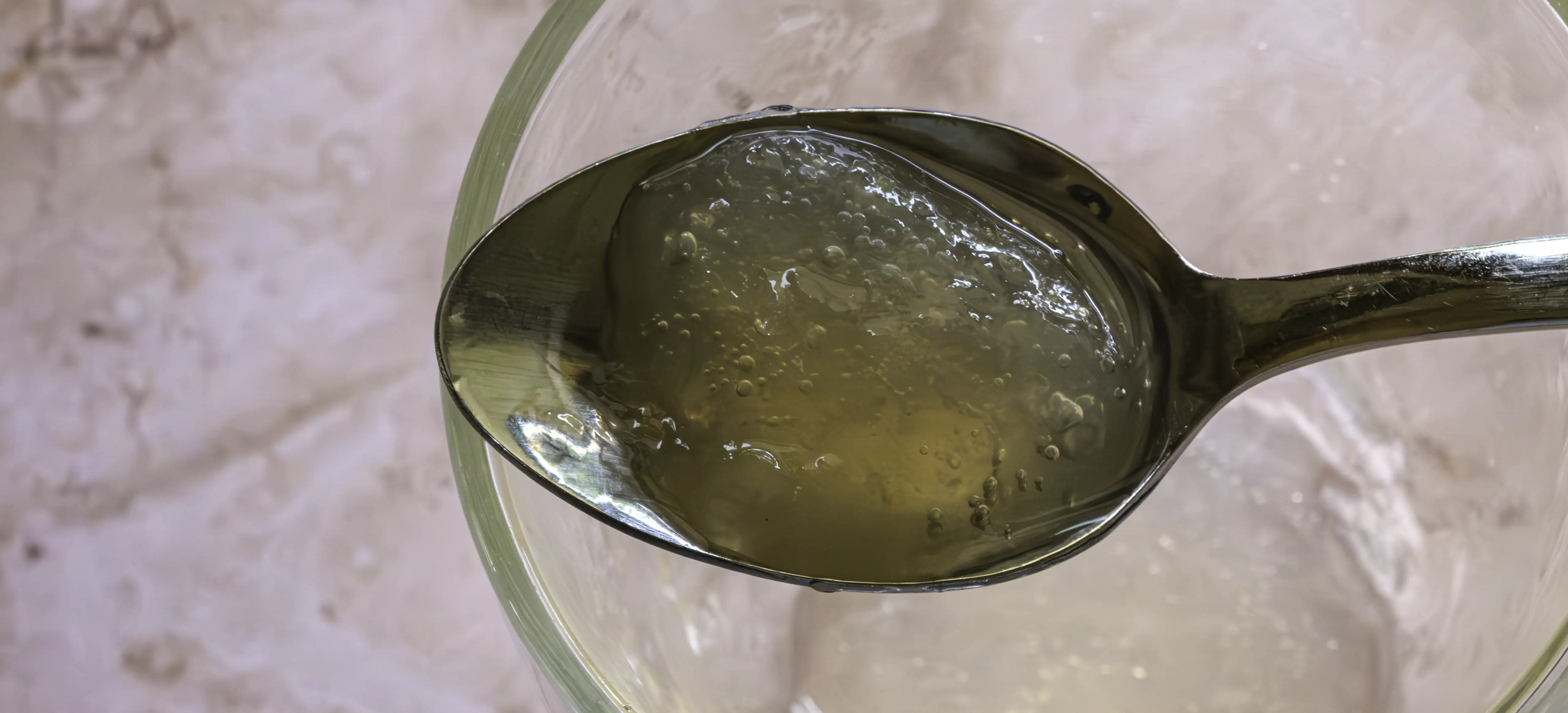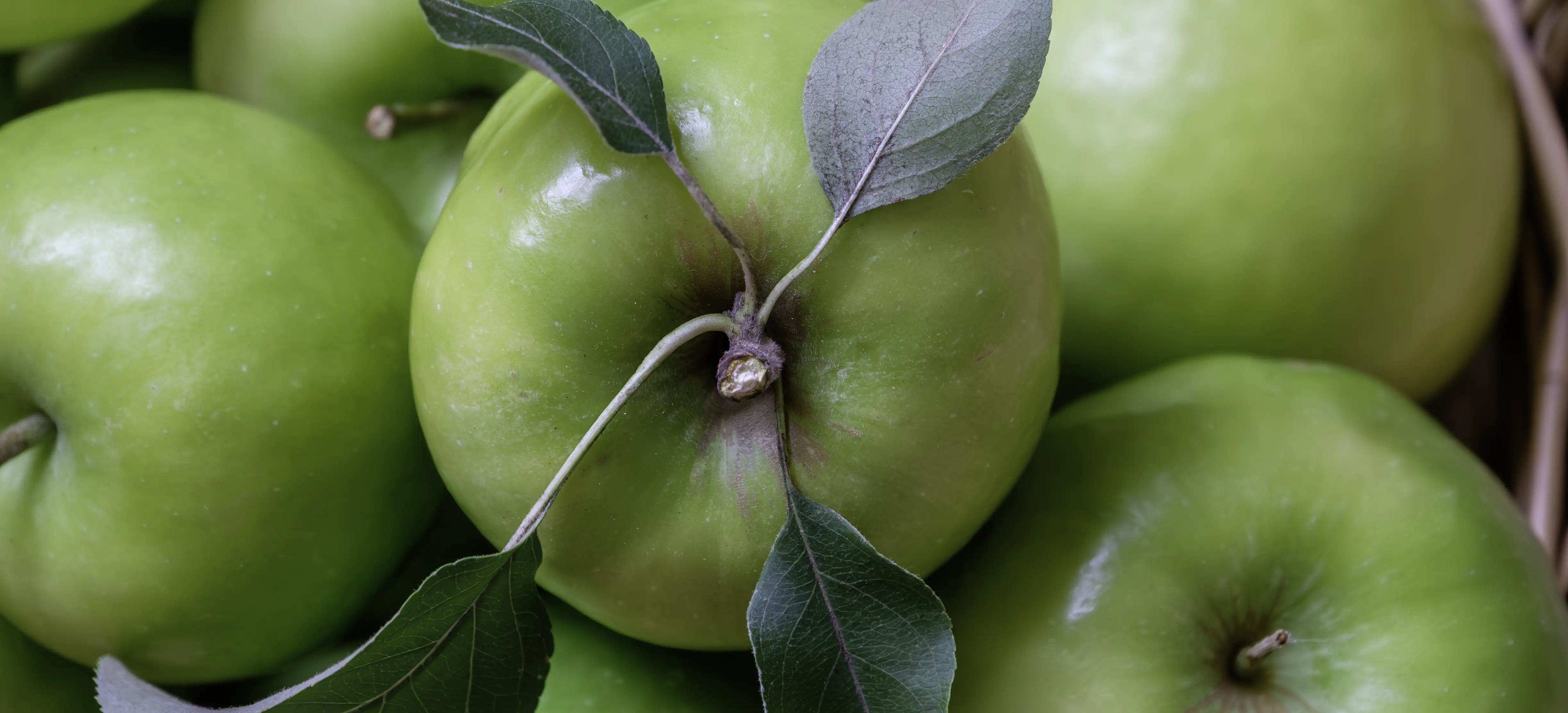Pectin: Extracting Apples Superpower
- Preserves

Pectin is a unique fibre found in various fruits. In the presence of sufficient natural fruit acid and sugar, its responsible for the ‘jelling’ of preserves. Its concentration varies to a greater or lesser extent in different fruits and influences how well a jam, jelly, or marmalade sets. To ensure a perfect set, low-pectin fruit must be supplemented with additional pectin. It can be added in three ways: with commercial powdered or liquid pectin, by combining high-pectin fruits to a preserve made with low-pectin fruit or by using your own homemade pectin. This is an easy and economical alternative. During autumn, when apples are abundant, you can make enough for a year of preserve making.
Apples natural flavour, aroma and colour is perfect for making pectin as it doesn’t mask the other fruits natural qualities. Quince can be substituted, if apples are not available, as they also have a neutral profile. The same method can be used to extract the pectin from any high-pectin fruits such as, red currants, black currents or lemons. These should only be used where their flavour and colour characteristics are intended to be an essential part of the preserve.
- Preparation Time:
- 30 minutes
- Cooking Time:
- 60 minutes
- Quantity:
- 2 x 300ml bottles
INGREDIENTS
- 2 kg
- Green cooking apples

METHOD
Gently wash and dry the apples to remove any garden or shop dust and/or debris. Remove any bruised or damaged areas. Slice the apples, without removing the skin, core and seeds, and place in a a stainless-steel preserving pan or heavy bottom stainless steel pot. Cut the fruit pieces approximately the same size so they cook at the same rate and are mushy at the same time.
Add sufficient fresh water to ensure all the apples are covered. Simmer for approximately 30 mins or until they are well-cooked and mushy. Remove from the heat.
Prepare the jelly bag. Pour the juice into a jelly bag and leave it to strain overnight. Refer to the Notes Section below: How to Make and Use a Jelly Bag.
Next day, squeeze the jelly bag to extract all the remaining juice. This should yield 1.5 – 1.7 litres of juice depending on the amount of water added to cover the fruit. It will be cloudy and have a viscous consistency.
Pour the strained juice into a stainless-steel preserving pan or heavy bottom stainless steel pot and simmer gently until it’s reduced by half. It will be cloudy, thick and syrupy. Progressively remove any scum that rises to the surface. Refer to the Notes Section below: Removing the Scum.
Pour into hot, dry and sterilised bottles and seal immediately. If the juice is allowed to cool it will begin to gel.
Process in a boiling water bath for 10 minutes to ensure the bottles are vacuum sealed. Refer to the Notes Section below: Hot Water Bath Processing, if required
Remove from the hot water bath and place on a heat-resistant surface and allow to cool.
Wipe down the bottles, label and store in a cool dark place. Alternatively, the pectin syrup can be frozen, in convenient sized containers.
Once opened or defrosted, keep into the fridge. Refer to my article on xxxxxxxx on how to test if your preserve has enough pectin to get good set and how to use your homemade pectin to make it so.
NOTES
 The Pectin Test: A large clump means your mixture has a high pectin level
The Pectin Test: A large clump means your mixture has a high pectin level- Good quality jars should be used in all preserving, particularly when they are processed in a hot water bath. Thin jars often cannot withstand the temperatures and may crack either in the bath or on and or after removal. Avoid the disappointment and invest in some good jars from a homewares or preserves outlet. Select jars that have non-reactive lids as any vinegar solutions used can cause the lids to rust over time.
- How to Make and Use a Jelly Bag
- A jelly bag is essential to strain fruit and to make jelly. It can be made from heavy-duty calico, cotton flannel or close-weave nylon, multiple layers of muslin (cheesecloth) or any other material that will only allow the fruit juice to flow through. The skin, seeds and pulp must remain inside the bag.
- Secure the jelly bag tightly, using loops or very strong tape, on a stand, upturned stool or chair in a jelly bag holder or over a stainless-steel sieve. Place a bowl underneath to catch the juice as it strains.
- Fill the jelly bag progressively with fruit. Leave the fruit to drain overnight. For jelly making do not squeeze the bag to extract the juice as this will create a cloudy jelly. To obtain the apple juice for pectin, the bag can be squeezed as the high pectin juice concentrate has a different function in making the preserve.
- Immediately after use, remove the pulp and seeds, thoroughly wash the jelly bag, and rinse several times to remove all traces of detergent. Completely dry the bag before storing.
- The bag can be reused multiple times, however, sterilise it before every use by scalding it with boiling water. This will also help the juice to run freely through the bag, instead of being absorbed into it.
- Removing the Scum
- Reducing fruit syrups and making jams, jellies, and marmalades can produce a scum while they are boiling. Impurities from the fruit and sugar will rise to the surface and a fine frothy foam will move towards the edge of the preserving pan.
- Some fruits will produce more scum than others. This is a natural self-clarification process and makes the task of making a high-quality preserve easier.
- Removing the scum increases the syrups and the preserve’s clarity. This is very important if it is being submitted for competition. Remove the scum before bottling. Using a stainless-steel spoon, skim the scum from around the edge of the preserving pan. Be careful to remove just the scum and not the jam. This can be done while the preserve is boiling and/or once it has been taken off the heat.
- Do not attempt to remove the scum from the centre of a boiling pan, as there is a high risk it will splutter and hot preserve burns.
- Hot Water Bath Processing
- Processing preserves in a hot water bath creates a vacuum seal and increases the products shelf-life and quality. Either of the following methods provides an easy and safe solutions in a home kitchen.
- Preserving Unit Method
- Place sealed bottles in the Fowlers Preserving Unit or equivalent. Each unit is likely to have their own recommended process. Please follow your units’ instructions. The following method is for the Fowlers Vacola Simple Natural/Year Rounder unit.
- Cover the sealed bottles with water and set the kitchen timer for one hour. Switch off after this. The water should not boil. If boiling occurs within the hour, turn it off immediately so it doesn’t boil longer than 5 minutes.
- Turn off unit and remove the lid. Using the tap, draw off some hot water so the level is sufficiently below the bottles to be able to safely remove them without scalding yourself. Remove from hot water bath and place on a board to cool for 12-18 hrs before removing the lids.
- If a vacuum seal has not been created. Process a second time.
- Stock Pot Method
- Line a large stock pot with some sheets of newspaper, a folded tea towel or cut-down cake rack. This lining will protect the bottles from direct heat and prevent cracking. Place the bottles in the pot, allowing space between each bottle so they do not touch.
- Cover with water, bring to the boil, and hold at gentle boil for 30 minutes. Turn off, remove lid, and allow to stand for 5 minutes before removing. If possible, remove some of the hot water so the level is sufficiently below the bottles to be able to safely remove them without scalding yourself.
- Remove from hot water bath and place on a board to cool 12-18 hrs before removing the lids. If a vacuum seal has not been created. Process a second time.
 Freshly picked Granny Smith apples will have a higher pectin level than stored fruit
Freshly picked Granny Smith apples will have a higher pectin level than stored fruit
